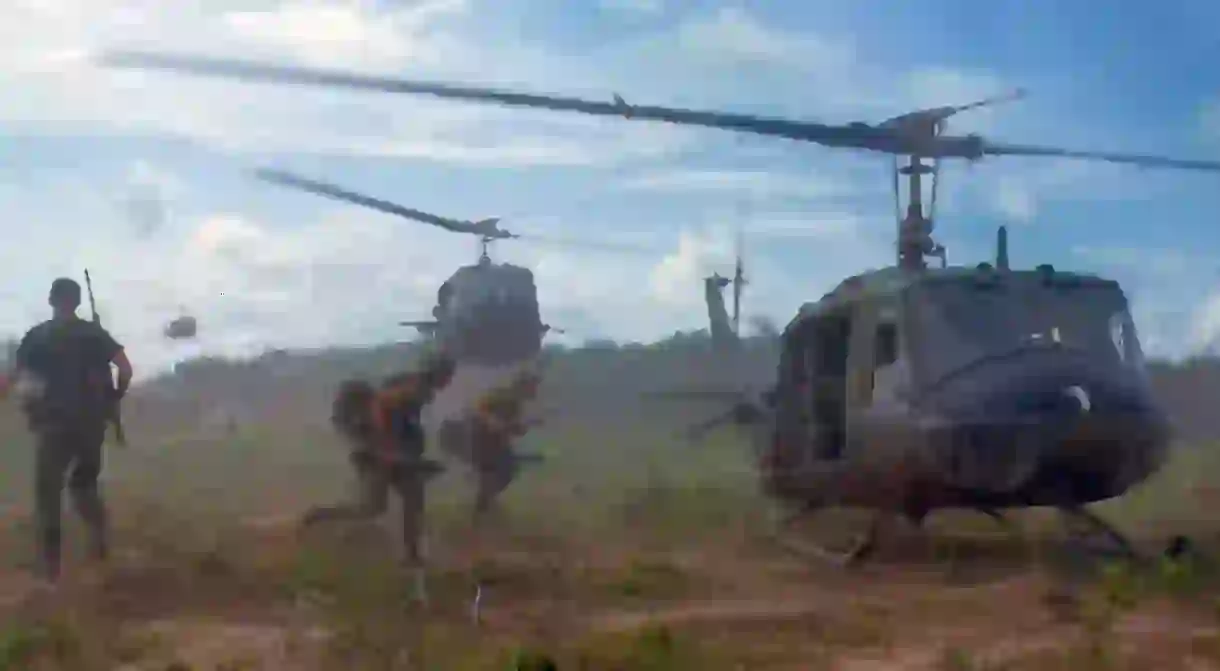11 Things You Didn't Know About The Vietnam War

For many baby boomers around the world — those born after WWII — the Vietnam War was the defining conflict of their generation. It was a conflict that nearly brought revolution to America, and ripped Vietnam to shreds. The conflict left an indelible mark on history, but there’s still much that people don’t know about this pivotal war.
The Americans weren’t alone
Many people mistakenly believe — much like the comical ‘coalition of the willing’ in Iraq in 2003 — that the Americans acted unilaterally in Vietnam. In fact, New Zealand, Australia, Cambodia, Laos and South Korea all contributed significant numbers of troops to the war.

The Americans used people sniffers
Everyone knows about the defoliant, Agent Orange, because of the horrible birth defects it caused, but not many people know people sniffers — known as Operation Snoopy. Northern troops on the Ho Chi Minh Trail were notoriously difficult to find, so the Americans used sensors to detect effluents of human sweat and urine. While they frequently turned up false results, leading to attacks on civilians and cattle, they did prove to be somewhat effective. Though, the North Vietnamese Army eventually learned to hang buckets of mud mixed with urine from trees to throw off the sensors.
It really should’ve been called the Vietnam Conflict
The Americans became formally involved in the war after the Gulf of Tonkin Resolution, but never actually declared war. Successive American administrations hoped to avoid nasty debates in Congress, so they never sought a formal declaration. This meant the war was technically a conflict, though neither side actually thought of it this way.

You’ve been pronouncing an American atrocity incorrectly
The My Lai Massacre, where a company of American soldiers murdered hundreds of Vietnamese civilians, became a rallying cry for anti-war protesters who argued that American involvement was far from the moral imperative their leaders often portrayed it as. But, despite the global outrage, people have been doing the victims a disservice for decades by not even bothering to pronounce it correctly. It’s actually pronounced: Me Lie.
The Ace of Spades meant death
As part of the mental war, American soldiers often put an ace of spades on the bodies of deceased enemy soldiers. They’d been told, incorrectly, that the card represented death in Vietnam. It hadn’t when the war started, but by the end, thanks to the Americans and their efforts to spook their enemies, it actually did come to represent death.

The death toll was almost entirely Vietnamese
In American media and pop culture, American deaths are given considerably more weight than those of their enemies — and even their allies. In the Vietnam War, 58,220 Americans died. By comparison, including both north and south, approximately 2 million Vietnamese civilians died. That doesn’t even include soldiers, which would add another approximately 1.35 million Vietnamese deaths. That puts Americans at less than 2% of the total deaths.
It’s called the American War in Vietnam
This factoid has been reported a thousand times, but for anyone who grew up with American culture, this is still a weird one to hear. Many people around the world instantly associate Vietnam with war. The words are now collocations — words strongly linked in our minds. In Vietnam, however, they call it the American War.

The Americans played ghost noises in the jungle
Vietnam has elaborate death rituals, meant to send the deceased to the afterlife in peace. But if the dead person doesn’t get a proper burial, it’s believed they’ll wander around as a ghost to haunt the living. Since many bodies didn’t get proper burials during the war, there would’ve been plenty of upset ghosts. The Americans preyed on this fear by playing ghost noises on hidden speakers in the jungles at night.
The first American troops were welcomed with flowers
The Office of Strategic Services, the precursor to the CIA, included the first Americans involved in the Vietnam War. They were helping the French and southern government in Saigon as early as 1954. The first official ground troops’ involvement came in 1965, when marines landed in Danang. Rather than a D-Day-style invasion, the troops were greeted by local women and flowers — quite the image when you think of how the rest of the war unfolded.
American troops often preferred enemy guns
Many Americans didn’t like their own guns: the M16 assault rifle. It was reportedly prone to jamming in the jungle environment, where mud and dust seeped into every crevice. Though, later analyses showed that it was actually the gunpowder chosen by the US Army that caused jams. In the middle of intense firefights, when Americans were close enough to see the whites of their enemies’ eyes, their M16 rifles would jam, forcing them to crawl out and take the more reliable AK-47 from the enemy dead.
The majority of Americans were volunteers
While the draft attracted a lot of attention, because many ardent peace activists were forced to either flee the country or to fight a war they’d never supported, most of the American troops in Vietnam actually chose to go. This was a cataclysmic era in the US, when parents and grandparents from the ‘Greatest Generation’ taught their kids that communists were the scariest threat in the world. As a result, many joined the army to fight the red scourge sweeping through Asia — to combat the supposed domino theory.














